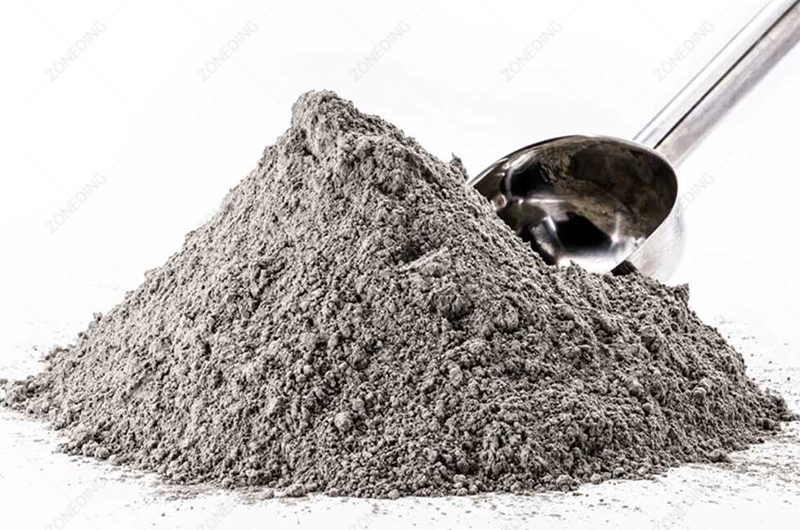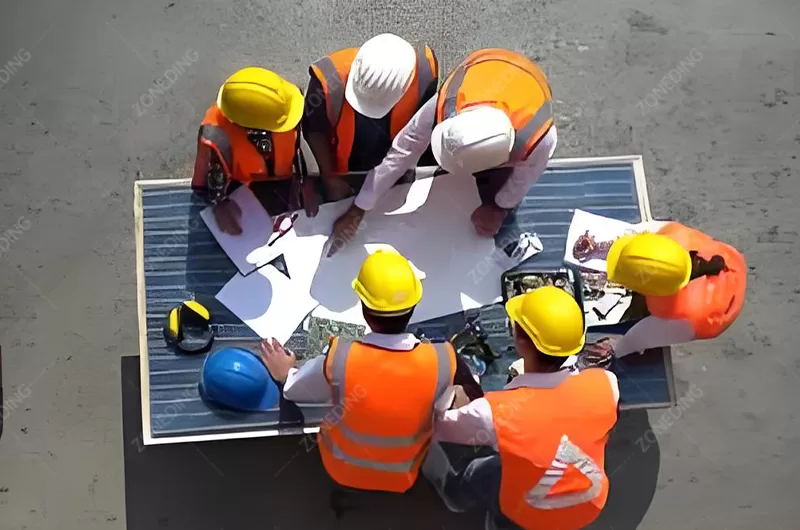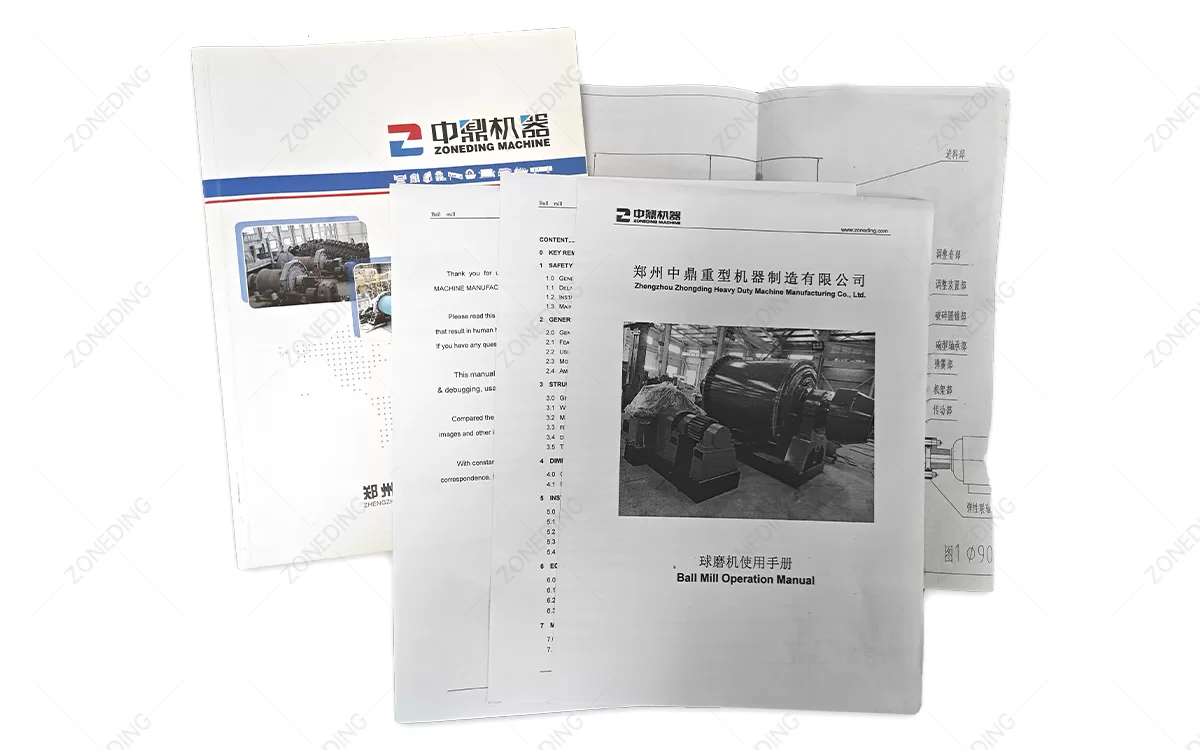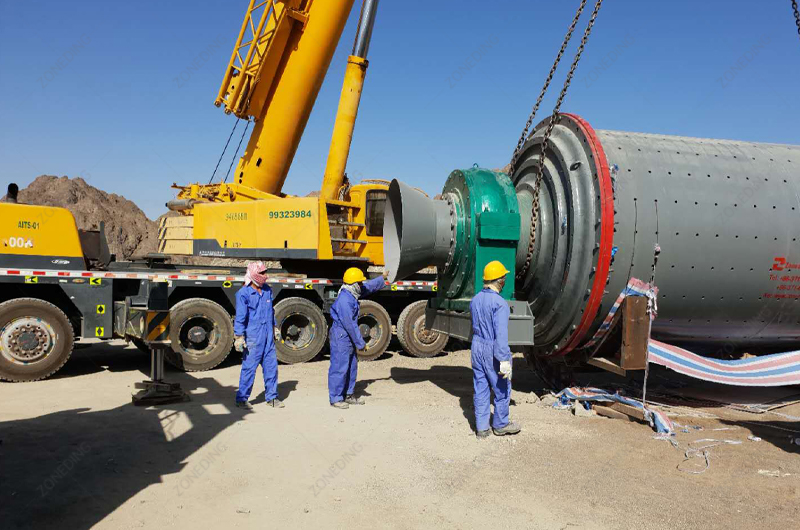Search the whole station Crushing Equipment
Can Beach Sand Yield Treasures? Yes, it can. Beach Sand often contains valuable minerals. These are called heavy minerals. Extracting them is called Heavy Mineral Sand Beneficiation. It is a special type of mineral processing. This article explains what is in Beach Sand. It talks about how to process it. ZONEDING MACHINE manufactures the equipment for this. Assistance is provided to help get the valuable minerals out.
Last Updated: March 2025 | Estimated Reading Time: 23 Minutes

Beach Sand is the sand seen on coasts. Most sand everywhere is quartz. But Beach Sand can be special. It can have heavier minerals mixed in. These are called Heavy Mineral Sands. These deposits are not found everywhere. They form in specific places. Heavy Mineral Sand deposits are found along coastlines or in areas that were ancient coastlines. They are created by natural processes concentrating minerals. This process takes a very long time.
Rivers carry rocks from the land to the sea. These rocks contain many different minerals. Ocean waves and currents move the sand around. Lighter minerals, like quartz, are easily washed away. Heavier minerals are left behind. They get concentrated in certain areas. This makes the deposits valuable. You find these deposits on current beaches. You also find them inland. These inland areas were beaches millions of years ago. Sea levels changed over time.

Major Heavy Mineral Sand deposits exist in several countries.
Finding these deposits needs geological work. Geologists drill samples. They check the samples for the amount and type of heavy minerals. Only deposits with enough valuable minerals are worth processing. Knowing the deposit location and its mineral content is the first step for any Heavy Mineral Sand Beneficiation. The process starts by understanding your deposit. Evaluation of its potential is provided. Equipment is designed based on the specific sand available. This ensures the plant is built for the sand it will process.
Heavy Mineral Sand deposits contain several valuable minerals. These minerals have high density. They are important for many industries. The main valuable minerals extracted from beach sand are titanium minerals (ilmenite, rutile), zircon, and sometimes monazite. Other less common heavy minerals can also be found. Each mineral has different uses. These minerals are vital for modern technology and manufacturing.
Here are some valuable minerals found in Beach Sand and their uses:
| Valuable Mineral | Type | Main Uses |
|---|---|---|
| Ilmenite | Titanium | Making titanium dioxide (white pigment for paints, plastics, paper). |
| Rutile | Titanium | Making titanium dioxide (higher purity), titanium metal (aerospace). |
| Zircon | Zirconium | Ceramics (glazes), refractories (high-temp materials), zirconium metal. |
| Monazite | Rare Earth | Rare earth elements (magnets, electronics, green tech). |
| Garnet | Silicate | Abrasives, waterjet cutting. |
| Staurolite | Silicate | Abrasives, sometimes in refractories. |
| Kyanite | Silicate | Refractories, ceramics. |



Extracting these valuable minerals from Beach Sand provides materials needed by the world. It is a source of significant revenue for mining companies. The design of the Beach Sand Beneficiation Process aims to recover these specific minerals efficiently. The process differs based on the mix of minerals in your sand. Knowing the exact mineral content is crucial for the best process design.
Processing Beach Sand to get valuable heavy minerals uses several steps. These steps separate minerals based on their physical properties. The main processes in beach sand processing include washing/desliming, gravity separation, magnetic separation, and electrostatic separation. Sometimes flotation is also used. These methods work in sequence. They progressively concentrate and purify the heavy minerals.
Here are the main process steps:

The exact sequence and number of times each method is used depends on the specific sand deposit. A simple deposit needs fewer steps. A complex deposit needs more steps and machines. The whole Beach Sand Beneficiation Process is designed specifically for your ore.
Getting pure mineral products from Heavy Mineral Sand requires using different separation methods together. Each method separates minerals based on a different property. This layered approach removes different minerals at each step. Gravity, magnetic, and electrostatic separation work together in a sequence. They progressively remove lighter minerals and separate different heavy minerals. This separation uses density, magnetic properties, and electrical conductivity.
Here is how they typically work together:
This combination is powerful. Gravity removes the bulk of the waste by density. Magnetic separation then splits the heavy minerals by magnetism. Electrostatic separation finally splits them by conductivity. This step-by-step process allows high purity levels for each valuable mineral. Each stage makes the material cleaner for the next stage. It ensures that the final products meet market specifications for purity. The plant flow is designed to integrate these separation methods efficiently.
Here is a summary of how these methods separate minerals:
| Separation Method | Property Used | What it Separates (Examples) | Input Stream | Output Streams |
|---|---|---|---|---|
| Gravity | Density | Heavy minerals from light minerals (Quartz) | Raw sand/Slurry | Heavy concentrate, Tailings |
| Magnetic | Magnetic Property | Magnetic (Ilmenite) from Non-magnetic (Zircon) | Heavy concentrate | Magnetic, Non-magnetic |
| Electrostatic | Electrical Cond. | Conductors (Rutile) from Non-conductors (Zircon) | Dry non-magnetic feed | Conductive, Non-conductive |
Processing Beach Sand for heavy minerals is not always easy. The sand itself seems simple. But it has complexities that make separation hard. Beach sand processing can be difficult because of fine clay particles, salt, and the similar physical properties of different heavy minerals. These factors require specific techniques and equipment to achieve high purity products.
Here are key challenges in Beach Sand Processing:
You need to know exactly what minerals are in your sand. You also need to know their sizes and shapes. This is where Mineral Analysis Is Basis. Detailed mineral analysis is fundamental to designing an effective beach sand beneficiation process. Tools like X-ray Diffraction (XRD) are used. XRD tells you the types and amounts of minerals. Scanning Electron Microscopy (SEM) is used. SEM shows you the shape and surface of the particles. Particle size analysis tells you the size distribution.
Knowing these things helps choose the right machines. It helps set up the process flow correctly. Without good analysis, the wrong equipment might be chosen. This leads to low recovery. It leads to low product purity. It means money is lost. A thorough analysis is the first step taken with customers. It helps recommend the best Beach Sand Beneficiation Equipment and Beach Sand Beneficiation Process.
Choosing the right equipment is critical for success in Beach Sand Beneficiation. The goal is to produce high-purity mineral concentrates. This means selecting machines that can effectively separate minerals with similar properties. Choosing beneficiation equipment for high purity minerals depends on several factors. These include:
Different equipment is needed for each stage of the process.
Here is a look at equipment choice for different stages:
The number and type of each machine must match the specific deposit and target product specifications. A detailed Mineral Analysis Is Basis. It tells you the size range, presence, densities, magnetic properties, and conductivity of your minerals. This data is used to select the right Beach Sand Beneficiation Equipment. A complete Beach Sand Beneficiation Process is designed. This ensures maximum recovery and desired purity. Different machines are provided. A full set of Heavy Mineral Sand Beneficiation equipment can be supplied. This gives you a complete solution for your plant.
Building a Beach Sand Beneficiation Plant near the coast has specific challenges. Both environmental rules and project costs need consideration. Building a plant by the sea requires careful consideration of environmental impacts, especially regarding water use and wastewater treatment. It also involves significant investment for equipment, infrastructure, and permits.
Here are key points for environmental and investment considerations:
Environmental Considerations:
Investment Costs:
Considering environmental protection is not just a cost. It ensures the project is sustainable. It helps get community acceptance. It avoids potential fines or shutdowns. Plants are designed to meet environmental standards. Equipment is provided that is robust for coastal environments. All these aspects are discussed to help plan your Beach Sand Beneficiation Plant project and your Gravel Plant Investment.
Beach Sand can be a source of valuable heavy minerals. These include ilmenite, rutile, and zircon. These minerals are important for paints, ceramics, and other industries. Heavy Mineral Sand deposits form naturally on coasts. Processing Beach Sand is challenging. Handling fine clay, salt, and minerals with similar properties is needed. Mineral Analysis Is Basis for good plant design. The main Beach Sand Beneficiation Process involves several steps.
Key steps include:
Choosing the right Beach Sand Beneficiation Equipment is crucial. It depends on the specific minerals and desired purity. Building a plant by the sea needs care. Wastewater Treatment Is Crucial. Tailings Comprehensive Utilization Is Trend. Environmental rules are strict. Investment includes equipment, construction, and permits. Operating costs include energy and maintenance.
Carefully plan your project. Understand your sand with analysis. Choose the right equipment for your Beach Sand Beneficiation Process. Focus on environmental responsibility. ZONEDING MACHINE provides the necessary Heavy Mineral Sand Beneficiation equipment. Assistance is provided to help you design your plant. Support is offered for extracting these valuable minerals. This lets you turn Beach Sand into a profitable resource. Inquire about your project. Assistance can be provided with your Gravel Plant Investment in this area.
ZONEDING MACHINE is a company in China. It manufactures mineral processing equipment. It works with businesses (B2B). Machines have been made since 2004. Equipment is made for Heavy Mineral Sand Beneficiation. This includes machines for every step in a Beach Sand Beneficiation Process. Machines made include Spiral Concentrators, Magnetic Separators, shaking tables, flotation machines, hydrocyclones, screens (Vibrating Screen), feeders, and more. Engineers are experts in mineral separation. They help you design the best plant layout. It matches your Heavy Mineral Sand deposit and your target mineral products. Reliable Beach Sand Beneficiation Equipment is supplied directly from the factory. Support is provided for your project from design to operation. Equipment has been supplied to over 120 countries. The challenges of Beach Sand Processing are understood. ZONEDING wants to help build a successful Beach Sand Beneficiation Plant.
If you are planning a Beach Sand Beneficiation Plant, inquire with ZONEDING MACHINE. The right equipment and support for your project can be provided.



Last Updated: March 2025
We use cookies to ensure that we give you the best experience on our website. If you continue to use this site we will assume that you are happy with it.
Privacy Policy